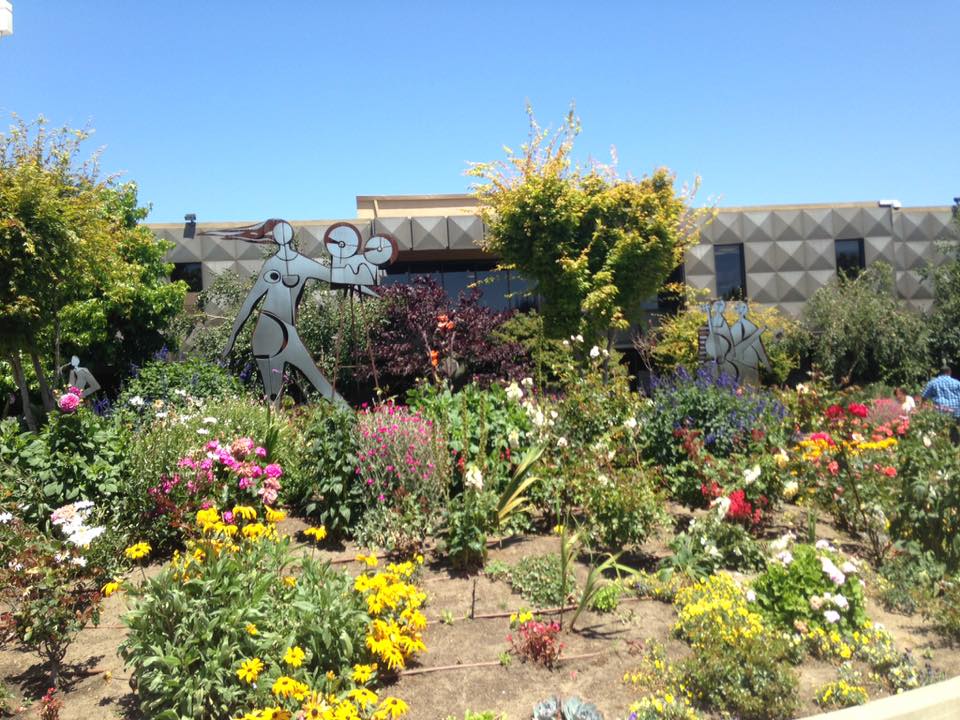With the announced closure of Fantasy Studios on September 18, 2018, I thought it would be fitting to talk to someone who was there at the time of it being a film center. I tracked down Dan Olmsted, who worked at the Saul Zaentz Film Center on films such as The English Patient, Amadeus, Boogie Nights, K-19: The Widowmaker, and Fern Gully 2. Dan still works in the Zaentz Media Center today as a re-recording mixer for Berkeley Sound Artists, a post production sound facility that focuses on documentaries and independent films. At Berkeley Sound Artists, Dan has worked on films such as Love & Taxes, The Kill Team, The Force, and From Baghdad to the Bay. In recent years Dan was able to do some freelance work for Fantasy Studios on films such as Mifune: The Last Samurai, directed by Steven Okazaki.
Fantasy Studios was built in 1971. It was originally a private recording studio for the record label, Fantasy Records, which was established in 1949. In 1980 it was opened to the public as a music recording studio. In 1980 Saul Zaentz created The Saul Zaentz Film Center following the success of his 1975 film One Flew Over the Cuckoo’s Nest. It would later become the Zaentz Media Center. Fantasy did the post sound work on films such as Amadeus, The Talented Mr. Ripley, and The English Patient.
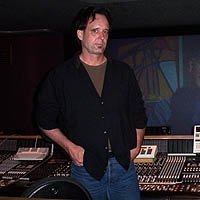 DS: Hi Dan, can you tell us about how you got your start in your career and your early days at the Saul Zaentz Film Center?
DS: Hi Dan, can you tell us about how you got your start in your career and your early days at the Saul Zaentz Film Center?
DO: I was a student in Filmmaking out at San Francisco State University back in the late 80’s, and at the same time this organization, the Saul Zaentz Film Center was working on a big picture. It was called the Unbearable Lightness of Being. Phillip Kaufman directed it. It was around the holidays at the end of the year and they were in a hurry to finish it. They were getting behind in their post schedule. So the Operations Manager of the film center, Steve Shurtz called up my school and asked a professor out there if they had any students that were good at sound. Bob Lewis recommended me and another guy, Sam Hinckley and we came out here and interviewed, and they hired both of us as temps to work in audio doing sound transfers and working in the machine room.
DS: Wow, that’s cool.
DO: Yeah, wow I know. That was kind of like a thunderbolt for me because I wasn’t looking for a job. I was busy making my student films, but I came over and interviewed and they hired me. It was a culture shock, because suddenly I was in this team of about 20 sound editors all working on this big motion picture. They were eager to finish it by the holidays, because they wanted the release to come by the end of the calendar year because then they could be considered for Oscars for that year. That didn’t work out actually. They finished the film in January, but they did get some Oscar nominations. And so that really changed my life, and ultimately over the next semester I realized that I would have to drop out of school, but I had a full time job working in this facility that was really hot doing post production film sound work.
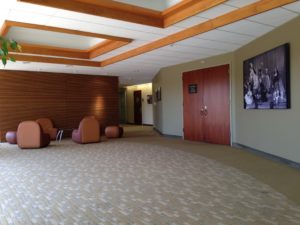 DS: What was it like working at the Saul Zaentz Film Center? Any interesting anecdotes?
DS: What was it like working at the Saul Zaentz Film Center? Any interesting anecdotes?
DO: Just as a general description, this place during the late 80’s was thriving. They had already received Academy Awards for sound for One Flew Over the Cuckoo’s Nest and Amadeus and also The Right Stuff. All those films were posted here before I arrived. And as a result this whole facility, which was built mainly for Saul to do the post production on his productions, was very busy. During the lulls between Saul’s projects, feature films from Hollywood started getting booked to come up here and by the time I got hired…I was hired as a temp, but they decided that they had to keep me on because they were expanding their crew right around then, and we just had back to back feature films coming through here. A range from top end A pictures by directors like David Lynch to more, sort of modest stuff. We mixed all the Ernest movies here. Ernest Saves Christmas, and Ernest Scared Stupid, all those wonderful dorky little comedies.
It was just really really busy, you know, we would finish the print master on a film on a Friday and the next Monday we were starting the pre mix on the next one. It was so busy that they started having to book this mix stage [points to the 3rd floor mix stage] for night shifts. That was one of the things that I had to do for awhile. The graveyard shift where we would show up at 7pm and work until the morning crew arrived.
My own work here began in sort of the technical jobs. In what they call a transfer operator. Back then everything was on reel to reel tape and magnetic film. So we had to copy takes that they needed from the field to use in the editing rooms. And then I got moved up to managing the machine room. There’s a job called recordist. And finally they decided that I seemed to have enough potential to become a sound mixer and on these smaller films, these lower films, they started putting me on what you call the second chair in the mixing theater. The first chair mixes the dialogue and the music, and the second chair mixes the sound effects and foley. And that’s kind of how I learned to do all this stuff.
As far as anecdotes go, it was really really interesting having characters like Walter Murch around here, John Waters, Alan Splet came up here to work on Blue Velvet and stayed, and ended up getting assigned his own sort of permanent space on the corner of this floor, that other corner room back there [on the same end of the building and directly across from the corner room that was Walter Murch’s editing room] and Alan was sort of a name in sound design and he continued supervising sound jobs. Things like Frank Oz’s film Dirty Rotten Scoundrels. Dead Poet’s Society by Peter Weir was another one. It was interesting going suddenly from film school to working along with people like that.
DS: Pretty fortuitous for sure.
DO: Yeah, I got lucky, Doug. I can’t say it any other way. A job here fell in my lap and I never looked back.
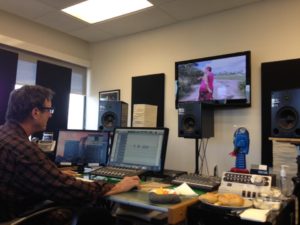 DS: So what do you think it was that attracted the Hollywood films to come to the Bay Area?
DS: So what do you think it was that attracted the Hollywood films to come to the Bay Area?
DO: Well the Bay Area was very hot back then and there was that whole culture that was started by Francis Coppola, and George Lucas, and Saul Zaentz of producing really thoughtful and intelligent feature films, and guys like Walter [Murch] especially brought along with it sort of progressive sensibilities about sound. Mark Berger who was the head sound mixer here, got his start working with Walter on Apocalypse Now and films like that. And so they got a reputation for doing really high quality sound work. John Waters mixed a lot of his films here. He liked coming here because he said he preferred to be far away from Hollywood, so the producers wouldn’t be dropping by a lot and trying to micro manage his film project. There might have been some of that appeal of bringing a project from LA up here to Berkeley, as a sort of refreshing break from the Hollywood scene. But this place really was just like Skywalker Ranch, and to some degree like Francis Coppola’s facility in Napa, Zoetrope. Those three places were just an extension of the Hollywood film industry all through the 80’s and 90’s.
DS: What are some of the projects that you worked on?
DO: Some of the cooler ones that we did at the Saul Zaentz Film Center, At Play In The Fields Of The Lord, The English Patient, The Talented Mr. Ripley, films by John Waters like Cecil B. DeMented, Pecker,. P.T Anderson’s Boogie Nights got mixed here, The Twin Peaks TV pilot, and later the feature film version (Fire Walk With Me), you know David Lynch was a client of ours for awhile. Those were some of the highlights working here during the film center days. For Berkeley Sound Artists, The Most Dangerous Man in America, the film about Daniel Elsberg that got nominated for an academy award. Jim LeBrecht and I mixed The Devil and Daniel Johnston, Jeff Feurzig’s wonderful doc about the musician. A film called Promises by Justine Shapiro that I mixed here, that was back in the film center days, also got an Oscar nomination. It was a film about Israeli and Palestinians hoping to get along in the Middle East. Ruby Yang has been a client of ours as well.
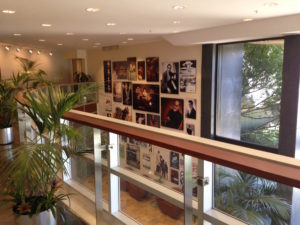 DS: Did you do anything besides films when you worked there? Games or advertising?
DS: Did you do anything besides films when you worked there? Games or advertising?
DO: During the days of the Saul Zaentz company it was really strictly features. They would occasionally bring in a documentary to mix, something local. We mixed the film Crumb here, for instance. That wonderful film about the cartoonist Robert Crumb. Pretty much all feature films. Berkeley Sound Artists does more of a variety of work. We take on video games, they’ve mixed some audio for games, and sort of what I call commercial jobs for the local tech companies and things like that. The occasional indie feature film comes through here, but the bread and butter of this company I’d have to say is feature documentaries. The kind that wind up, if they’re successful, on HBO and PBS and play in film festivals and occasionally get a theatrical run.
DS: Can you tell us about the transition from working at the Saul Zaentz Film Center, to the time it was sold, to working at Berkeley Sound Artists?
DO: Even when the film center was still in business, I would occasionally talk them into letting me use the room for my little local projects by people I knew. If they were slow, they would let me bring in a short film at super low rate just because they were eager to have me get more practice and supervise my own film jobs and also the Film Center started kind of touting me as the guy for local film projects. They were still mixing feature films, but when there were gaps in the schedule we could book local films and I became the specialist to mix those. Then the whole Fantasy company got sold off. Saul and his partners decided to cash it out. They sold the record label to another record label, Concord Jazz, but that company had no interest in running a film operation, so the film center was shut down. Never the less, people were still contacting me to mix movies. They really wanted me to work on their films, so as a way to do that I got a hold of Jim LeBrecht, who had a studio in this building downstairs—Berkeley Sound Artists. I asked him if I could bring projects in on the weekends or in the evenings and use his room, and that began a relationship that continues to this day. I’m kind of an associate of this place and a lot of my work involves bringing in projects where filmmakers get in touch with me directly and we make a budget and make a plan. At the same time, Jim decided it would be helpful for him if I could start working on some of the films that he supervises. That combination of work has kept me pretty darn busy ever since then.
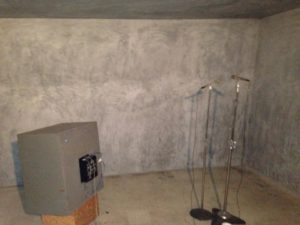 DS: Can you talk a little bit about how you learned to mix or to sound design?
DS: Can you talk a little bit about how you learned to mix or to sound design?
DO: I went to film school and I learned the basic skills of shooting and editing films. At the same time I have been a musician most of my life so I had been in and out of studios, recording. And I learned about audio that way. Microphones and recorders and the sort of technique of producing audio in music and those two things kind of came together for me when I came down here and interviewed for that job so long ago. That’s why I was selected by my teacher to go interview. He knew that I was a little more skilled with audio than the other students in my film classes. And at that point I suddenly found myself around a bunch of real high end professional film sound people who I was able to learn from informally by picking their brains all the time. The other thing that I think helped my career thrive was that I was constantly offering to do work on my friends films. And pretty quickly I had more skills than they did working on the sound in films and they were happy to shoot me even a little money even though they were students, to mix their films. And it’s funny what happened, because I was mixing films on the side by myself, I was asking questions all the time around here to the editors, people like Walter Murch, and mixers like Dave Parker, I could walk up and ask them about equalization, what he thought about EQ and things like that. And then the management around here sort of caught on to that and they decided to encourage me as well. So that’s why they started basically promoting me to the mixing board, to the mix theater. That’s the kind of momentum that built up for me slowly and continues.
DS: Can you tell us about what you currently do working for Berkeley Sound Artists?
DO: I bring in projects and I sound design and mix them. I work as part of a team of people on feature documentaries where I tend to be the dialogue mixer or pre mixer, working with Jim. And the kind of work I do revolves around both feature length documentaries and short subjects. There’s an awful lot of short documentary work going on in the Bay Area. Little films about progressive political causes, things like that – the occasional web series (The F-Word by Nicole Opper for instance), or short, or industrial job for some client, some film production crew that’s doing a job for Facebook or Google, so that’s what I’m up to now when I’m not teaching school.
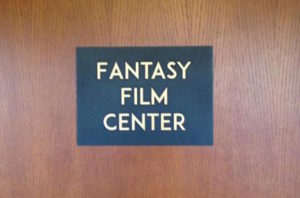 DS: Besides Fantasy Studios and the Zaentz Media Center building itself, are there any parts of the Saul Zaentz Film Center that are still alive today? Is there anything thing left from that legacy that continues?
DS: Besides Fantasy Studios and the Zaentz Media Center building itself, are there any parts of the Saul Zaentz Film Center that are still alive today? Is there anything thing left from that legacy that continues?
DO: Just in the last month, the last vestige of the Saul Zaentz company moved out of this building. Well, Saul passed away of course, but the Saul Zaentz Company endured as a company that administered all of the income I think from all of the properties, the film properties, and they still had their offices on the 7th floor of this building, just as they always had ever since this building was built. They just gave notice just at the end of last month and moved out. I would have to say that’s the end of the line, especially given the pending closure of the Fantasy Studios downstairs. All that’s left are memories and little ghosts like me wandering the halls, a ghost of the crew that used to work for the company.
DS: Berkeley Sound Artists was around back then.
DO: It was around, but as a tenant of the Fantasy Company. The other enduring legacy that I would have to say, is the number of filmmakers that still have offices in this building, because one of the things that the Fantasy Company always did which I thought was really great, was they gave really low rent to local independent filmmakers, documentary filmmakers, and also editors, people working in film, and some of those clients are still in the building. Steve Okazaki comes to mind, Connie Field, Maureen Gosling, Jed Riffe. And the building itself is still here. They call it the house that Cuckoo’s Nest built.
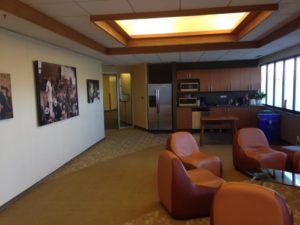 DS: Do you see any more changes on the horizon?
DS: Do you see any more changes on the horizon?
DO: Of course, things are always changing aren’t they. The whole process of film sound post production has changed radically over the years that I’ve been involved in it. It’s been an interesting thing to see actually. The way everything shifted from celluloid film and magnetic tape, through multitrack tape and video synced with time code, to digital editing of course. And that kind of change will keep going on. It will continue.
**Although Fantasy Studios is closing, Berkeley Sound Artists and the other companies in the Zaentz Media Center will remain open for business as usual.
